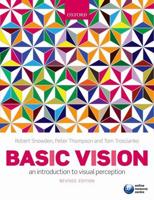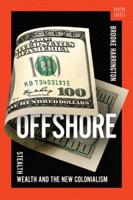Publisher's Synopsis
On the Origin of Objects is the culmination of Brian Cantwell Smith's decade-long investigation into the philosophical and metaphysical foundations of computation, artificial intelligence, and cognitive science. Based on a sustained critique of the formal tradition that underlies the reigning views, he presents an argument for an embedded, participatory, "irreductionist," metaphysical alternative. Smith seeks nothing less than to revise our understanding not only of the machines we build but also of the world with which they interact.
On the Origin of Objects is the culmination of Brian Cantwell Smith's decade-long investigation into the philosophical and metaphysical foundations of computation, artificial intelligence, and cognitive science. Based on a sustained critique of the formal tradition that underlies the reigning views, he presents an argument for an embedded, participatory, "irreductionist," metaphysical alternative. Smith seeks nothing less than to revise our understanding not only of the machines we build but also of the world with which they interact.
Smith's ambitious project begins as a search for a comprehensive theory of computation, able to do empirical justice to practice and conceptual justice to the computational theory of mind. A rigorous commitment to these two criteria ultimately leads him to recommend a radical overhaul of our traditional conception of metaphysics.
Everything that exists-objects, properties, life, practice-lies Smith claims in the "middle distance," an intermediate realm of partial engagement with and partial separation from, the enveloping world. Patterns of separation and engagement are taken to underlie a single notion unifying representation and ontology: that of subjects' "registration" of the world around them.
Along the way, Smith offers many fascinating ideas: the distinction between particularity and individuality, the methodological notion of an "inscription error," an argument that there are no individuals within physics, various deconstructions of the type-instance distinction, an analysis of formality as overly disconnected ("discreteness run amok"), a conception of the boundaries of objects as properties of unruly interactions between objects and subjects, an argument for the theoretical centrality of reference preservation, and a theatrical, acrobatic metaphor for the contortions involved in the preservation of reference and resultant stabilization of objects. Sidebars and diagrams throughout the book help clarify and guide Smith's highly original and compelling argument.
A Bradford Book









